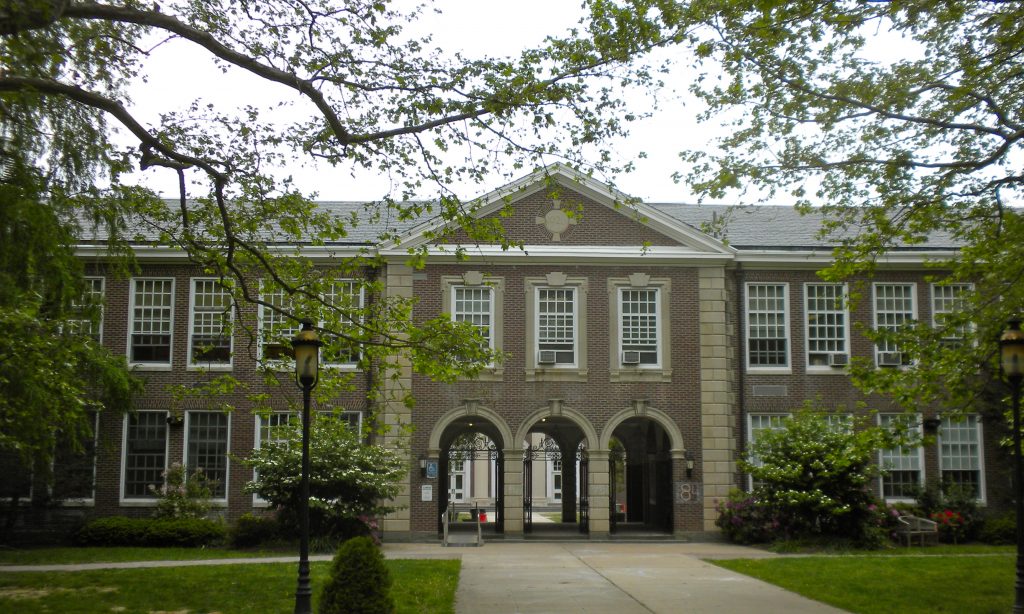
At its latest public session, Haddonfield’s Board of Education provided an update on its Long Range Facilities Planning, dealing with enrollment projections across the district.
According to board member and presenter Susan Kutner, there are four general parts to the long range plan for facilities: Objectives and Evaluative Criteria, Facilities Assessment, Exploring Options to meet deficiencies and objectives, then arriving at the actual Facilities Improvement Plan.
Whether parts of the proposed plan might be approved as a result of a referendum, Kutner was unsure. However, she admitted the idea in formulating an effective plan is to pick up information and build consensus along the way.
“Enrollment from the long-range plan seems to be one of the most controversial subjects, as in: is my crystal ball better than your crystal ball?” she said.
“I dislike presenting this in a vacuum because projections to understand them, you have to put them in context. You have to understand issues about space needs, capacity and educational accuracy.”
Kutner offered that school capacity is not a fixed number, and is not always relative to physical plant size – that a building which once fit 1,200 students decades ago may not be able to handle 900 today.
“Education has changed – the district might have different class-size objectives, they might be using the building differently, they might want teachers to have their own classrooms; these things change school capacity,” she added.
Kutner brought to light what she called the “happy range” which is the middle ground between the intended class size and the maximum number a district is willing to tolerate before changes are necessary.
“If you go too far, you sacrificing educational adequacy, and if you miss it on the other end, you might have surplus space in your school,” she explained.
According to the presentation, enrollment projections and recommendations which take into account the proposed Bancroft and Snowden housing projects are expected to be markedly different.
Given the limited market-rate housing included with all three current Bancroft proposals, long-range planning projections indicate that its completion may generate additional students, particularly at Haddonfield Memorial High School, and there would be no need to adjust standard enrollment projections for the district.
As the Snowden proposal is expected to welcome those who need “affordable housing” and to be attractive to residents with children, completion of that project is expected to generate a significant amount of new students relative to existing enrollments. The recommendation is to quantify the projected number of new students and factor in for baseline enrollment planning.
According to the Cohort-Survival Enrollment Projection, undertaken as required by the New Jersey Department of Education for long-range planning, Haddonfield School District enrollment is expected to increase just 1.9 percent by 2026.
Kutner acknowledged this a conservative estimate, which does not take into account factors such as: an influx of preschool children from aggressive home sales in the borough, actual number of new students from affordable housing, or increased empty-nester housing turnover into Bancroft.
“The important thing to remember is, there is no need to precisely pinpoint future enrollments. The critical consideration is that we have that sweet spot, that the buildings can accommodate should they grow more but not have surplus square footage you don’t need,” Kutner stated.
For a complete breakdown of enrollment numbers within Kutner’s presentation, visit: https://haddonfieldschools.org/wp-content/uploads/2019/11/Enrollments_11_21_19.pdf.
In response to overwhelming public attendance and concern on the matter of installing security vestibules across all district schools, Kutner offered the following:
“We’re going to circle back to security when we do the physical plan – probably in February. By that time, it’s likely that the state funding for security grants will be announced,” she said.
In other news:
- Thursday’s public session was the first for the board’s newest member, Lynn Howard-Hoag. Hoag, who was selected to replace the departed Maureen Eyles, was sworn in on Nov. 14 by board secretary Michael Catalano.
- Board President Adam Sangillo revealed that a further reading on the policy which dictates whether or not the district is empowered to charge a facilities fee for usage of its fields would not be held until its next public session in December. He added that further discussion on the issue will occur in January, and a vote will follow at an unspecified time.









